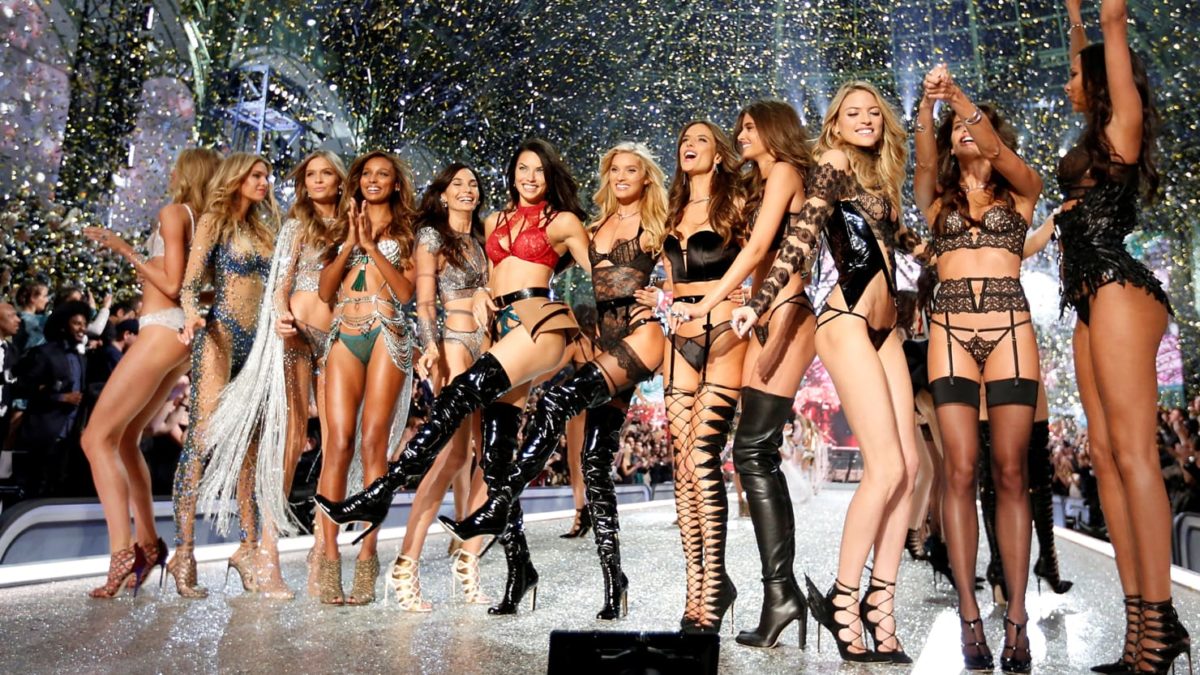Latest sales figures suggest that lingerie brand Victoria’s Secret is falling out of favour with its female consumer. Does the brand’s waning command of the market signal the end of an exclusive high glamour?

Rewind almost a decade and I’m squeezing onto a pleather sofa in my school’s common room, desperately awaiting the airing of the Victoria’s Secret annual catwalk show. There is to be over an hour of Hugh Hefner-inspired choreography, featuring impossibly-beautiful models clad in little more than feathered wings and, frankly tacky, gemstone-covered underwear. Underwear I will rush to buy with fistfuls of saved-up babysitting cash the following weekend.
Ten years ago, the Victoria’s Secret allure was still very much present. But a decade later and the latest sales figures suggest what we have surely seen coming for years: the brand is out of sync with its consumers, outdated and on its way out.
The annual fashion show extravaganza, once a powerful marketing formula, is now the symbol of the brand’s downfall. Featuring an exclusive cast of glammed-up supermodels in blinged-out bras, the spectacle has long invited criticism from those who pointed out the vast lack of diversity and saw the event as implicit in the fashion industry’s extreme beauty standards. And while the show has made moves to re-brand itself – focussing on its models as empowering, healthy athletes – it hasn’t been enough to turn around the tone-deaf marketing.

The reality is, times have changed and Victoria’s Secret hasn’t. With a self-image revolution underway and the #MeToo movement fighting the male gaze, the brand’s sexualised imagery – barely changed in the last two decades – seems, if not merely outdated, then anti-feminist and anti-inclusive.
And it’s not just the annual show that has seen consumers looking elsewhere for their undies. With limited sizes, reported declining quality and styles that hinge on flaunting female sexuality, the brand has managed to alienate a huge section of women. For many women – who can’t fit into lingerie that stops at a size XL or DDD cup – Victoria’s Secret has never catered to their needs. That the brand has neglected roughly 67 percent of American women and ignored a plus size industry that generates over $20 billion of annual sales says a lot about their inability to keep up with a changing consumer base.
And for the women the brand does cater for? I can only imagine they’re looking elsewhere for underwear designed with women (not men) in mind. Bras designed for men to look at, not women to wear, have a diminishing place in a consumer base increasingly looking for authentic campaigns and products that make them feel good in their own skin.
With underwear brands, the likes of Aerie and Lonely, producing imagery in tune with the women who buy them, it’s no wonder Victoria’s Secret command of the market is waning. Both brands have garnered praise for their highly-inclusive campaigns featuring models of different body sizes, genders, disabilities and ethnicities, and both have vowed not to digitally alter any of their models, choosing, instead, to celebrate their models.
The tides are no doubt changing. More and more brands are following in the footsteps of what Dove brought into the mainstream: creating products and imagery that are about giving women confidence, rather than insecurities. And it doesn’t stop with underwear brands. One of the biggest new beauty brands to launch in the last few years – Glossier – has brought the “no makeup makeup” look into the mainstream, championing a more pared-back look through imagery featuring a range of non-models.
Victoria’s Secret’s high glamour is going the way of Playboy. And with it go the archaic, unrealistic versions of what women should look like. I can only hope that rigid, push-up bras and airbrushed campaigns follow suit.
What do you make of the changing industry standards? Let us know in the comments below!






